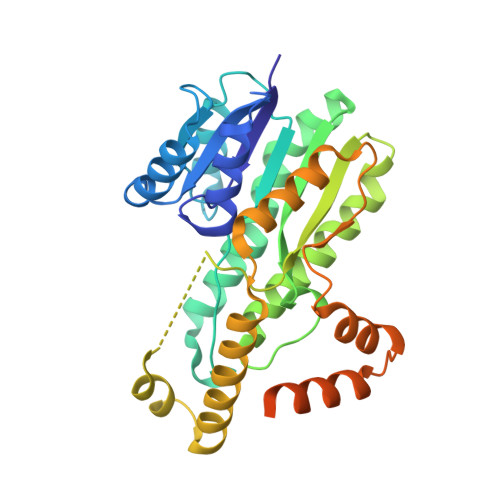17beta-hydroxysteroid dehydrogenase type 1 stimulates breast cancer by dihydrotestosterone inactivation in addition to estradiol production.
Aka, J.A., Mazumdar, M., Chen, C.Q., Poirier, D., Lin, S.X.(2010) Mol Endocrinol 24: 832-845
- PubMed: 20172961
- DOI: https://doi.org/10.1210/me.2009-0468
- Primary Citation of Related Structures:
3KLM - PubMed Abstract:
The active estrogen estradiol (E2) stimulates breast cancer cell (BCC) growth, whereas the androgen dihydrotestosterone (DHT) has shown an antiproliferative effect. The principal product synthesized by the 17beta-hydroxysteroid dehydrogenase type 1 (17beta-HSD1) is E2, although we have demonstrated that the purified enzyme also inactivates DHT. However, the direct roles of 17beta-HSD1 in sex-hormone regulation and BCC proliferation have not been completely established. Here, we show that 17beta-HSD1 inhibition suppresses DHT catabolism by 19%, whereas knockdown of the gene expression increases the concentration of DHT by 41% in the T47D BCC line. The 17beta-HSD1/DHT complex crystal structure reveals that DHT binds in both normal and reverse modes, but the latter mode leading to O3 reduction is preferred with stronger interactions. Using RNA interference and an inhibitor of 17beta-HSD1, we demonstrate that 17beta-HSD1 expression is negatively correlated to DHT levels in BCC but positively correlated to estrone reduction, E2 levels, and cell proliferation. 17beta-HSD1 inhibition reduces DHT inactivation, increasing the antiproliferative effect by DHT in T47D cells after 8 d treatment. Thus, 17beta-HSD1 up-regulates BCC growth by a dual action on estradiol synthesis and DHT inactivation. We have further demonstrated that 17beta-HSD1 can enhance the E2-induced expression of the endogenous estrogen-responsive gene pS2, providing an important information regarding the modulation of the estrogen responsiveness by 17beta-HSD1 that may also contribute to BCC growth. These results strongly support the rationale for inhibiting 17beta-HSD1 in breast cancer therapy to eliminate estrogen activation via the sulfatase pathway while avoiding the deprivation of DHT.
Organizational Affiliation:
Research Center of the Laval University Hospital Center (CHUQ-CHUL) and Laval University, Québec, Canada.
















